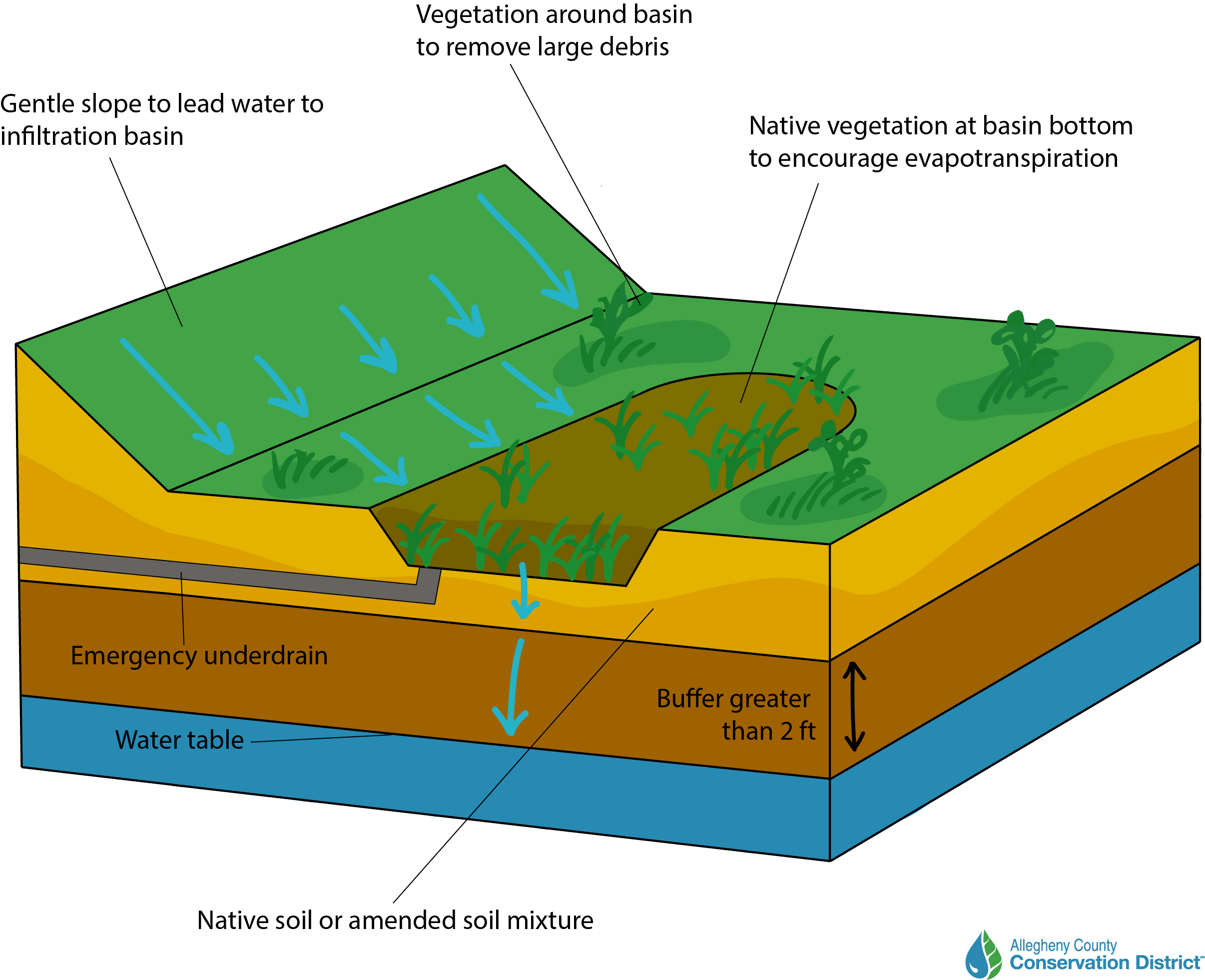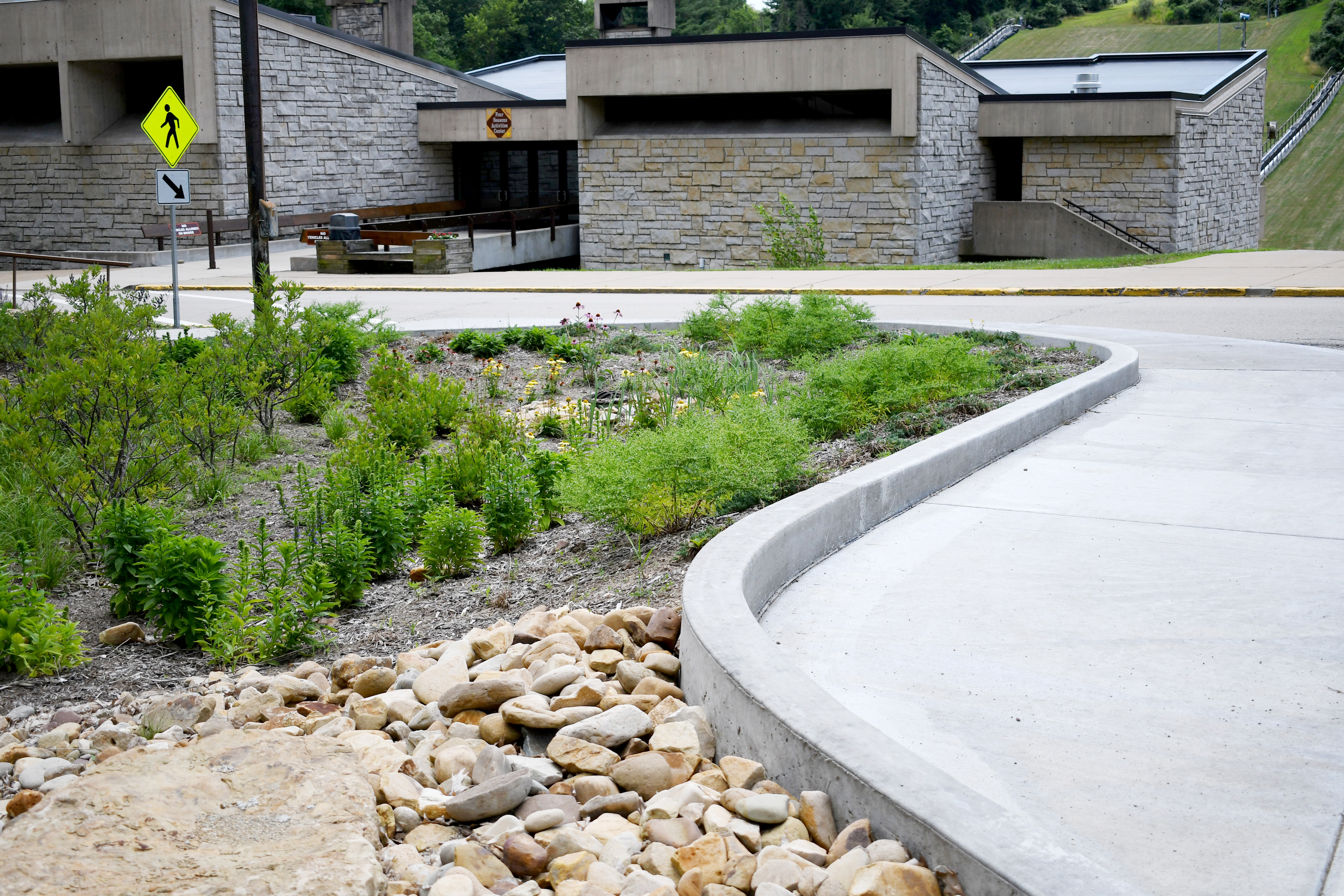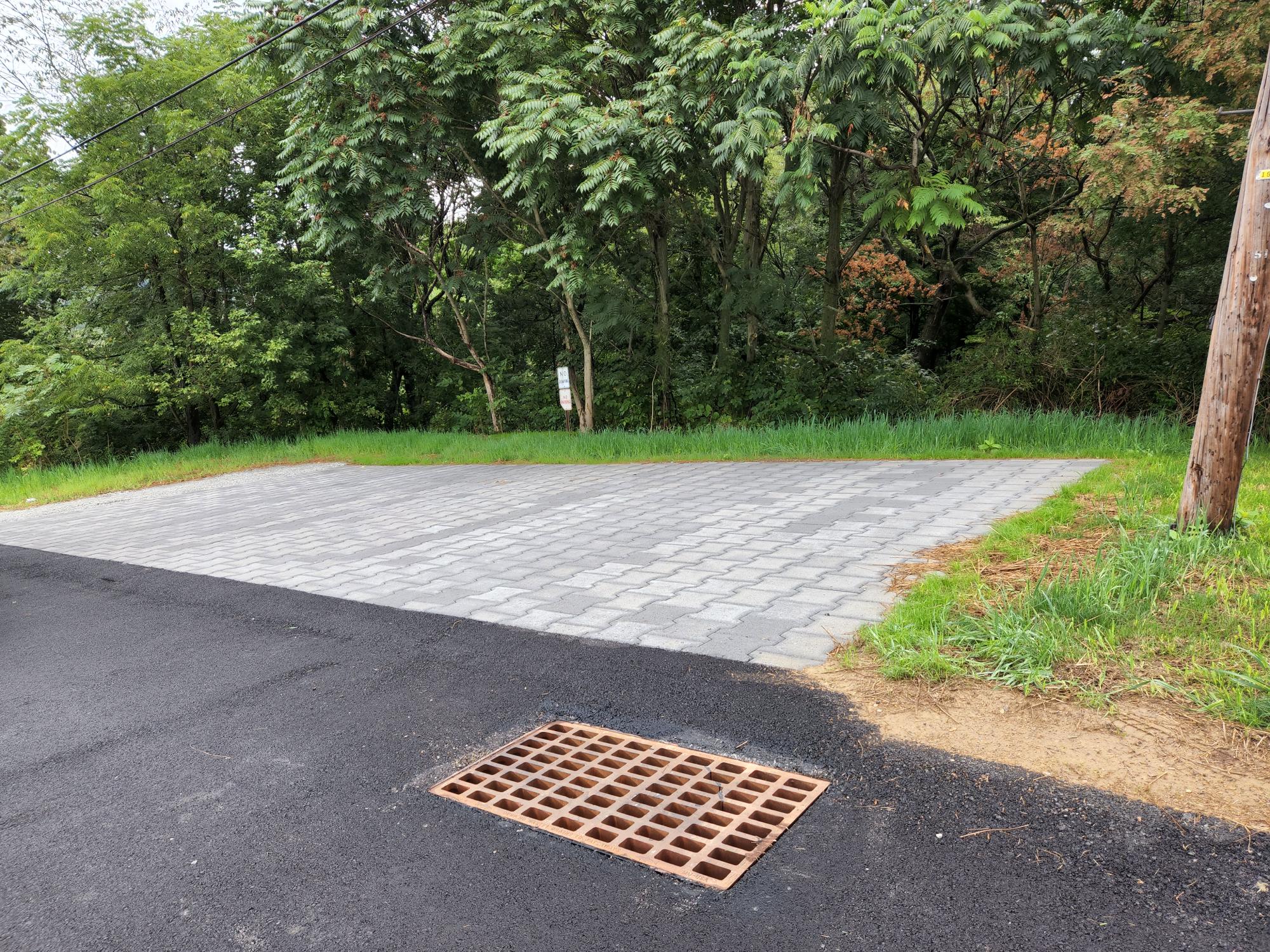How Green Infrastructure Promotes Stormwater Infiltration
What Is Infiltration?
Stormwater begins as rain. When rain flows off the landscape, it becomes stormwater runoff that can negatively impact communities. To prevent this, stormwater needs to be managed. One management option, if site conditions allow, is to infiltrate the water. After a rain event, water can run off the landscape, be intercepted by trees or other plants, or infiltrate into the ground.
Infiltration occurs when water is absorbed back into soil. To increase this naturally occurring process, stormwater can be directed to green infrastructure that has design elements to incorporate infiltration. Infiltration is sought in green infrastructure because of its benefits: recharging the groundwater table, filtering pollutants from stormwater, limiting localized flooding and reducing overflows.
Elements for Infiltration
Soil is the foundation for infiltration to occur. Infiltration capacity is the measure of how fast the maximum amount of water can move through a particular type of material. The components listed below can be used to improve infiltration capacity: soil, landform and vegetation.
Soil
Two primary characteristics of soil determine its ability to infiltrate. One, porosity, is the amount of space between soil particles. Two, permeability is the ability for water to move through soil.
Soil in Allegheny County often has high porosity but low permeability. Green infrastructure designers sometimes add things like compost and sand to increase the soil’s infiltration capacity.
Landform
Stormwater can be directed to a place that allows for it to gather and slowly make its way back into a groundwater system. This can be done by directing slopes to depressions in the ground, similar to the diagram below.
Vegetation
Plants uptake water from the soil where they are planted. Native plants are important for vegetated green infrastructure because they have deep root structures that both create additional pores for water to soak into and take up water to survive.Plants can also break down pollution. Some water pollutants are nutritious for plants and can be absorbed by roots and transformed into energy.
Examples of Infiltration
Infiltration Basins

Infiltration basins are one way to create a landform that redirects stormwater to be infiltrated. Infiltration basins use slopes to lead water to a sunken area where either native vegetation or gravel is at the bottom. In Allegheny County, native vegetation is often used. Stormwater can slowly recharge the groundwater table as it passes through vegetation and soil, and water can return to the atmosphere by a process called evapotranspiration.
Diagram based on information provided by the Environmental Protection Agency’s “Stormwater Best Management Practice: Infiltration Basin” article.
Rain Gardens

Rain gardens incorporate infiltration by using vegetation. In October 2022, ACCD completed a second rain garden near Boyce Park's Four Seasons Lodge. This rain garden uses native vegetation and an amended soil mixture to encourage infiltration and create overall improvements to the water quality of Turtle Creek. Learn more about the first rain garden completed in 2021.
Permeable Pavers

ACCD funded improvements to Virginia Drive in Lincoln Borough, including the installation of catch basins and storm sewers that outlet into a permeable paver infiltration area. Permeable pavement can be used in place of asphalt or concrete. The pavers are made of material that allows water to pass through and incorporates infiltration by leaving space for water to reach soil. Learn more about ACCD’s Dirt, Gravel and Low Volume Road Grant Program and funding opportunities for municipalities.
Sources: